Om Tabriz
Tabriz, Tabris In Tabriz, traditional production has been based on export, and the quality varies from some of the worst, using poor quality wool, to some of the finest and most luxurious, with silk in the piles and using the best wool. When you disregard the worst quality and focus...Read more
Showing 1–30 of 499 results
-
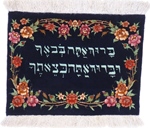
Tabriz Tæppe
CW3264276943cm x 57cmProduct from remote storageOnline
Priskr. 3.600kr. 2.700,- (-25%) -

Tabriz Tæppe
CW2924291043cm x 57cmProduct from remote storageOnline
Priskr. 3.600kr. 2.700,- (-25%) -

Tabriz Tæppe
CW1764276143cm x 58cmProduct from remote storageOnline
Priskr. 3.600kr. 2.700,- (-25%) -

Tabriz Tæppe
CW1873899466cm x 48cmProduct from remote storageOnline
Priskr. 36.000kr. 27.000,- (-25%) -
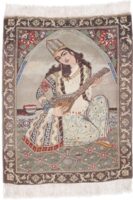
Tabriz Tæppe
CW7569017478cm x 60cmProduct from remote storageOnline
Priskr. 6.000kr. 4.500,- (-25%) -
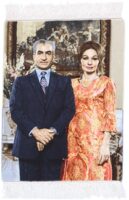
Tabriz Tæppe
CW7115926883cm x 62cmProduct from remote storageOnline
Priskr. 42.000kr. 31.500,- (-25%) -
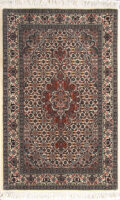
Tabriz Tæppe
tg0834990cm x 58cmkr. 4.900,- -
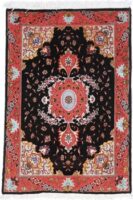
Tabriz Tæppe
CW3645885488cm x 60cmProduct from remote storageOnline
Priskr. 5.280kr. 3.960,- (-25%) -

Tabriz Tæppe
CW5055885888cm x 60cmProduct from remote storageOnline
Priskr. 5.280kr. 3.960,- (-25%) -
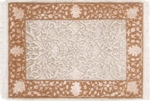
Tabriz Tæppe
CW86211614087cm x 62cmProduct from remote storageOnline
Priskr. 3.360kr. 2.520,- (-25%) -

Tabriz Tæppe
CW7635885190cm x 60cmProduct from remote storageOnline
Priskr. 5.280kr. 3.960,- (-25%) -
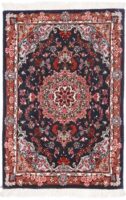
Tabriz Tæppe
CW8375885290cm x 60cmProduct from remote storageOnline
Priskr. 5.280kr. 3.960,- (-25%) -
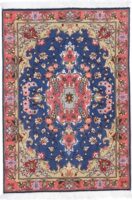
Tabriz Tæppe
CW8325885790cm x 60cmProduct from remote storageOnline
Priskr. 5.280kr. 3.960,- (-25%) -

Tabriz Tæppe
CW8335886590cm x 60cmProduct from remote storageOnline
Priskr. 5.280kr. 3.960,- (-25%) -
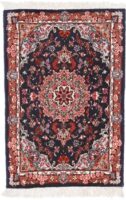
Tabriz Tæppe
CW6675885691cm x 60cmProduct from remote storageOnline
Priskr. 5.280kr. 3.960,- (-25%) -
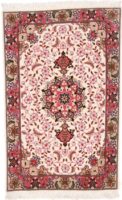
Tabriz Tæppe
CW6255885593cm x 60cmProduct from remote storageOnline
Priskr. 5.280kr. 3.960,- (-25%) -

Tabriz Tæppe
990791cm x 63cmkr. 5.200,- -

Tabriz Tæppe
CW7095560091cm x 63cmProduct from remote storageOnline
Priskr. 3.360kr. 2.520,- (-25%) -
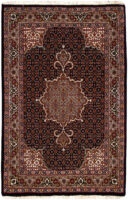
Tabriz Tæppe
tg0493794cm x 61cmkr. 4.980,- -
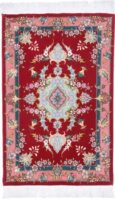
Tabriz Tæppe
CW2265886292cm x 63cmProduct from remote storageOnline
Priskr. 5.280kr. 3.960,- (-25%) -
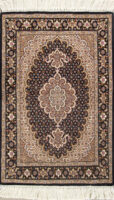
Tabriz Tæppe
998993cm x 63cmkr. 5.200,- -

Tabriz Tæppe
CW1235927693cm x 63cmProduct from remote storageOnline
Priskr. 33.600kr. 25.200,- (-25%) -
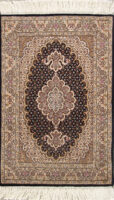
Tabriz Tæppe
998595cm x 62cmkr. 5.200,- -
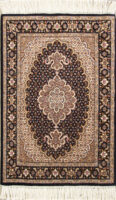
Tabriz Tæppe
998894cm x 64cmkr. 5.200,- -

Tabriz Tæppe
CW8665474793cm x 65cmProduct from remote storageOnline
Priskr. 19.200kr. 14.400,- (-25%) -
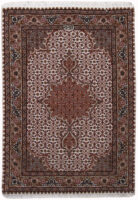
Tabriz Tæppe
977093cm x 67cmkr. 5.600,- -

Tabriz Tæppe
CW71354744100cm x 67cmProduct from remote storageOnline
Priskr. 12.000kr. 9.000,- (-25%) -

Tabriz Tæppe
9942106cm x 64cmkr. 5.200,- -
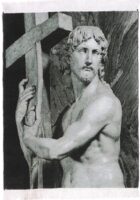
Tabriz Tæppe
CW4595475094cm x 73cmProduct from remote storageOnline
Priskr. 28.800kr. 21.600,- (-25%) -
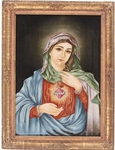
Tabriz Tæppe
CW4055474694cm x 74cmProduct from remote storageOnline
Priskr. 19.200kr. 14.400,- (-25%)
Showing 1–30 of 499 results
Mere om Tabriz
Tabriz, Tabris
In Tabriz, traditional production has been based on export, and the quality varies from some of the worst, using poor quality wool, to some of the finest and most luxurious, with silk in the piles and using the best wool. When you disregard the worst quality and focus on the nice, quality carpets, you could say that Tabriz carpets are among the best of Persia. Tabriz is also known for its tapestries, which refer to carpets knotted into landscapes, portraits and the like. Tabriz does not really have its own easily recognisable patterns. Since Tabriz was such an important centre for carpet export in the past, skilled merchants tried to match the supply to the demand. Therefore, all the popular patterns from other parts of Iran are being produced here. To tell a Tabriz carpet apart from a different carpet, you need to look beyond the pattern to the knot structure, the raw materials and the processing. Warp and weft thread typically consist of cotton, but often, a small quantity of polyester is mixed in to make it stronger. They are generally tightly knotted carpets with low cut piles of wool and often with silk. The finer quality products typically have 43,000-93,000 knots per ft2. In the cheaper qualities, the pile is often taller and the carpet is not as tightly knotted. The density is generally between 14,000 – 33,000 knots per ft2. Tabriz carpets are also knotted in the town of Khoy. Some are of lesser quality, but you can also find extremely good carpets.
The Perousian family, which I will tell you more about, produce many of their carpets here. If you are going to buy a Tabriz carpet, I recommend that you stick to the higher quality products. If you want to buy a Tabriz carpet that is on the cheaper side, so in other words a carpet for everyday use, you could consider buying a product from India. In this case, you would be buying a replica of a Tabriz carpet. In some cases, however, the best Indian carpets can in some cases be of better quality than the cheapest Persian carpets. The Iranians are the best at making quality carpets. This is what the market looks like right now. It may change, and you should be aware that there are also great differences in quality among the Indian carpets. Tabriz carpets are workshop carpets, knotted on a vertical loom. Unfortunately, natural dyes are not used very often in Tabriz carpets, but there are producers who work hard to maintain a high-quality level. They use special, good quality raw materials, hand-spun yarn and natural dyes. Some of them also knot excellent carpets on a silk warp. In the Tabriz area, both Ghiordes and Senneh knots are used. As a buyer, if you have a special request, e.g. a picture that is important to you, you can order it in the desired size at one of the workshops. The workshops in Tabriz are happy to accept special orders for carpets for your wall or floor. However, you have to be extremely patient and know that the delivery date may be postponed several times.
The Perousian Family
The Perousian family produces Tabriz carpets in the areas near Khroy by the city of Tabriz. Their carpets are knotted at a density of about 46,000 knots per ft2, corresponding to a raj quality of 50. This is quite standard for the area. The Perousians have specialised in using particularly good raw materials and natural dyes and work with the best knotters in the area. Their carpets are beaten harder than normal Tabriz carpets. They are thus made of better raw materials and have a denser pile than the average carpet in the area where they work, which is why their carpets are significantly more wear resistant and the colours are retained better. This is despite the fact that the knot density is roughly the same. The Perousian carpets can mostly be found with traditional Marhi design.
Familien Parvisian
In Tabriz, the Parvisian family also uses a similar concept. Their carpets have an even lower knot density – quite on purpose – with about 33,000 knots ft2 (40 raj). Nonetheless, they produce very beautiful and sturdy carpets, carpets that can really tolerate being used. The products offered by these families confirm what I already believed – that the raw materials are at least as important as the knot density when evaluating the wear resistance of a carpet. Parvisian carpets are mostly found with a Herati pattern.
The Faradji family
The Faradji family from Tabriz focuses just as much on the raw materials as the Perousian and Parvisian families. However, they also refine the knotting technique and thus knot finer carpets with a higher knot density on a silk warp. They generally also knot their own characteristic patterns. Among today’s recognised masters from Tabriz, you can find Azimzadeh, Alabaf, Garebagi, Shahsawapour, Nezam, Pourmani Benam, Shifar, Nazamidoust and Idjadi.
One cannot list the knotting masters of Tabriz without mentioning Haji Jalili, who is probably the most famous knotter from the city. Haji Jalili carpets are very valuable collectors` items, which only rarely appear on the market. Among the old masters, there was also Emad, Khayam, Djavan and Torabi.
One day in Kandovan, near Tabriz
In 2004, I was in Tabriz with my sister. As with previous trips, we were accompanied by Mehdi and Mohammad. We flew from Tehran to Tabriz where Amir Dehdilani was waiting for us at the airport. We spent the first day in the beautiful old bazaar, where we bought carpets together with our friends. The next day, we had agreed to go out to visit a small town called Kandovan. The interesting thing about Kandovan is that the people there live in the hollowed-out mountains of volcanic tuff, much like in Cappadocia in Turkey. After about an hour’s drive from Tabriz via the town of Ozko, we arrived in Kandovan. The tuff area is much smaller here than the more famous Cappadocia, but on the other hand, it is not particularly commercial. It is said that the water in Kandovan possesses special healing properties, so even though there was nothing wrong with us, we drank copious amounts of water hoping for a preventative effect. While strolling through town, we met a group of children from Tabriz who were out on a field trip with their school. The funny thing was that they found us, and particularly my sister as a woman, more interesting than the town they had come to see. When we went for a walk around town, a friendly man living in a house that was carved into the mountainside invited us in so that we could see what his home looked like from the inside. We bought fresh bread and honey from his small shop in town. Carpets are knotted in the area, but we were not fortunate enough to meet any knotters in Kandovan.
Tabriz lies in the province of Azerbaijan:
Azerbaijan is found in the north-western corner of Iran, but it continues beyond the Iranian borders. It is an area that has been plagued by wars for centuries. The capital, Tabriz, was founded in the 7th and 8th centuries, but in the 1200s it was conquered by the Mongols under Genghis Khan. In the 1400s, Tabriz became the capital of Persia under the Turkmen. In 1514, the Ottomans entered the province and deported a large part of the population to Turkey. Under the Safavids in the 1500s, the entire province and town of Tabriz experienced a boom, and even back then the crafty town merchants began to organise carpet exports to Europe. I want to focus on the Iranian part of Azerbaijan because that is the area I am most familiar with. In the middle of the 1800s, Tabriz was a carpet production centre, exporting to the west via Istanbul. It has always been home to skilled merchants who could fulfil the West’s demand for carpets. Azerbaijan has a highland climate, with cold winters and warm, dry summers. The population density in Azerbaijan is relatively high compared to other Iranian provinces. The majority of the population is originally Turkish, Kurd or Armenian. A large portion is bilingual, speaking both the local Turkish dialect and Farsi, which is Iran’s official language. In this area, carpet knotting is performed by both nomads and residents. Of the resident population, knotting is carried out by both men and women. Among the nomads, it is primarily women’s work. You can still find good, sturdy and very wear-resistant carpets from the Azerbaijan area on the market, but production is decreasing, like in other areas of Iran. Many of the carpets being sold today were knotted in the 1980s and 1990s. These are carpets with great value for money. The patterns are often large octagons or stylised medallions with flowers and animals. In the actual town of Tabriz, many different patterns are knotted, including patterns that were originally knotted in completely different parts of Iran. Tabriz is a gathering point for carpets from the entire Iranian Azerbaijan region, i.e. carpets from Tabriz, Khoy, Heriz, Ahar, Mehrawan, Goravan, Karadja, Lambaran, Sarab, Ardebil, Meshgin and Miyaneh as well as carpets made by nomads.
Source:
You are reading an extract from the book ‘Oriental Carpets, Knottet with Love’ by Martin Munkholm.
This extensive book about all that is carpets can be borrowed in Danish libraries or be bought following this link: https://belle-rugs.dk/en/expertise/bookfilmlecture/
The book is published by Muusmann Forlag.
For more info: http://muusmann-forlag.dk/
You can find our selection of Tabriz carpets below
